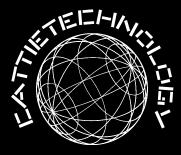Vinyasa yoga is a dynamic and popular style of yoga. It synchronizes breath with movement, offering both physical and mental benefits. For those aspiring to teach this style, a comprehensive Vinyasa yoga teacher training curriculum is essential. This training not only equips future teachers with the skills they need but also deepens their practice.
Understanding Vinyasa Yoga
Vinyasa yoga, often referred to as “flow” yoga, emphasizes fluid movement and transitions between poses. Each movement is synchronized with breath, creating a smooth and continuous flow. This style contrasts with static postures, focusing instead on the sequence of movements. This makes it essential for vinyasa yoga teacher training programs to cover the basics of breath control, pose alignment, and sequence structuring.
The Importance of Breath
Breath, or “pranayama,” is the foundation of Vinyasa yoga. A good training program starts with teaching the importance of breath control. Trainees learn various breathing techniques and how to integrate them into their practice. They understand how breath can influence the flow of movements and the overall pace of a Vinyasa class. Mastery of breath control is crucial for any aspiring Vinyasa yoga teacher.
Alignment and Anatomy
Understanding proper alignment and anatomy is crucial in Vinyasa yoga. A comprehensive curriculum will include detailed studies of human anatomy. This helps trainees understand how each pose affects different parts of the body. Proper alignment ensures that students practice safely and effectively. Teachers must know how to modify poses to suit different body types and abilities. This knowledge helps prevent injuries and enhances the benefits of each pose.
Sequencing
Sequencing is a core component of Vinyasa yoga. It involves creating a series of poses that flow smoothly from one to the next. A well-designed sequence enhances the practice experience. Training programs teach the principles of sequencing, including how to structure classes for different levels. Trainees learn to create sequences that are balanced and engaging. They also learn to adapt sequences based on the needs and energy of the class.
Teaching Methodology
Teaching methodology is a vital part of any yoga teacher training program. It covers the skills needed to effectively teach and manage a class. This includes communication techniques, class management, and the use of props and modifications. Trainees learn how to create a safe and inclusive environment for all students. They also practice giving clear and concise instructions, as well as hands-on adjustments.
Philosophy and Ethics
Yoga is more than just physical exercise. It has a rich philosophical background and ethical guidelines. A well-rounded training program includes the study of yoga philosophy and ethics. This includes the history of yoga, key texts like the Yoga Sutras, and the principles of the eight limbs of yoga. Understanding these concepts helps teachers bring a deeper level of meaning to their classes. It also guides them in maintaining integrity and professionalism in their teaching.
Personal Practice and Self-Reflection
Personal practice is an essential part of Vinyasa yoga teacher training. Trainees are encouraged to develop a consistent personal practice. This helps them integrate what they learn and deepen their own understanding of Vinyasa yoga. Self-reflection is also important. Trainees keep journals to reflect on their experiences, challenges, and growth throughout the training. This process of introspection helps them become more empathetic and effective teachers.
